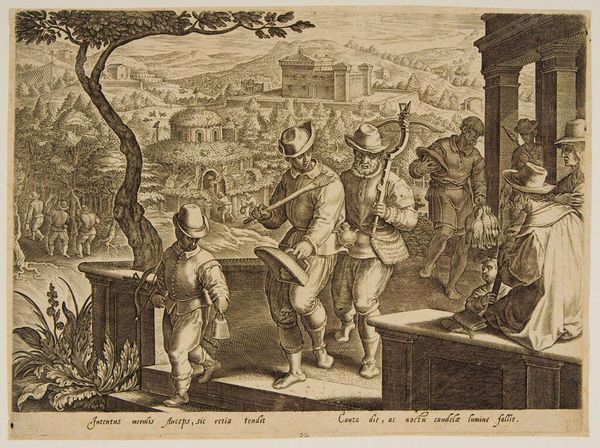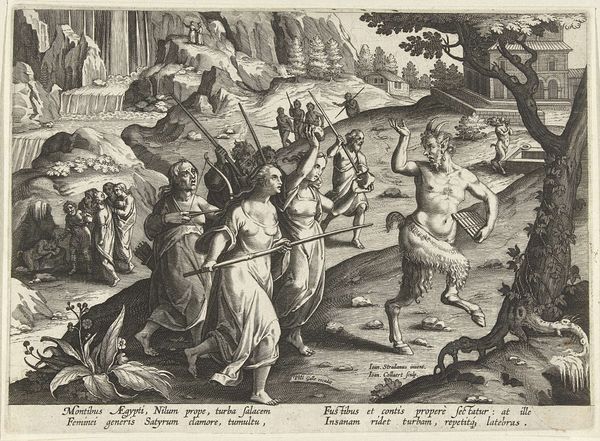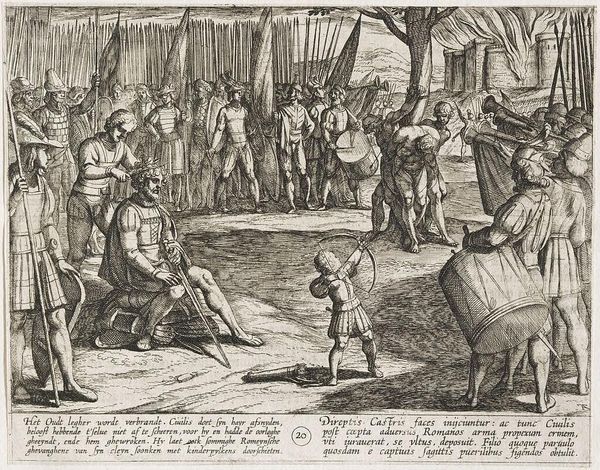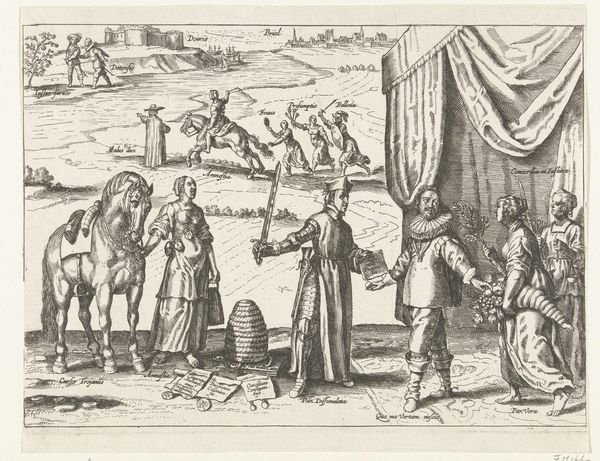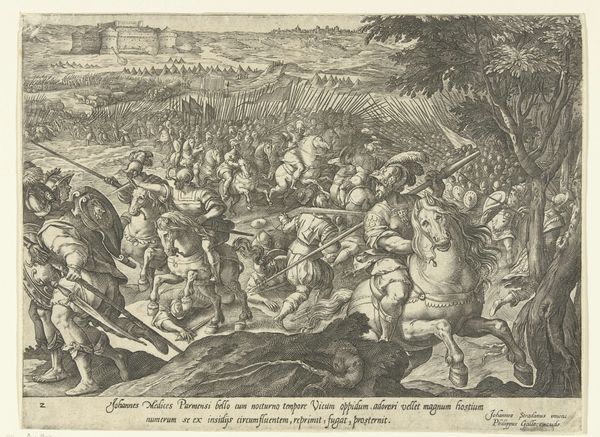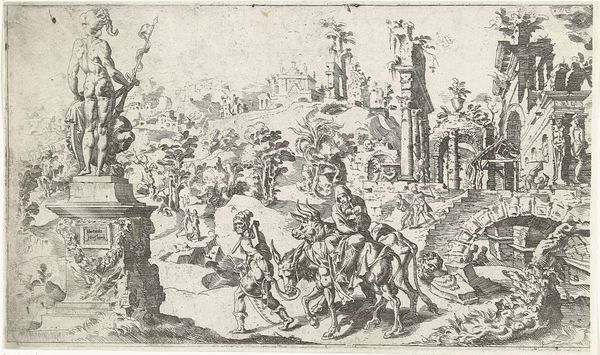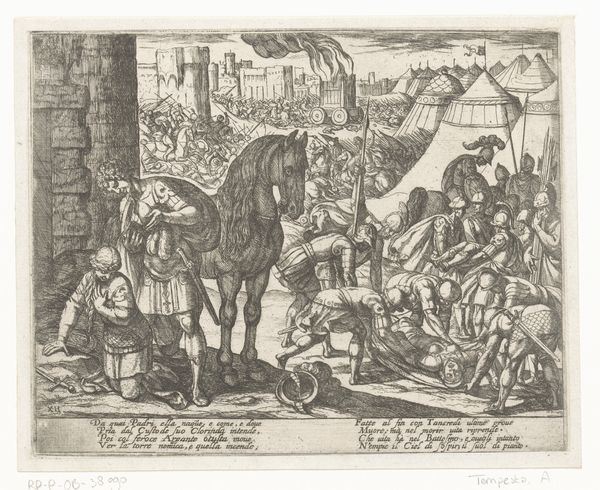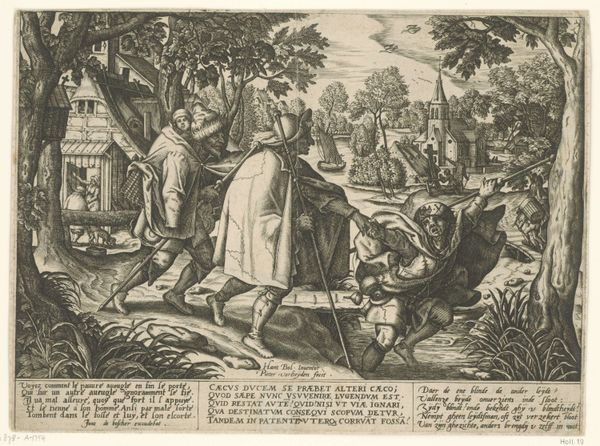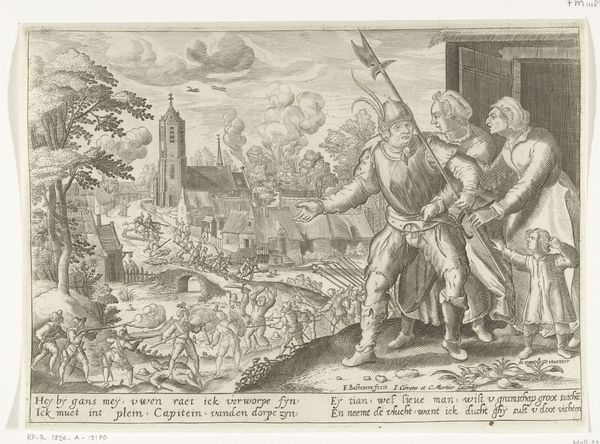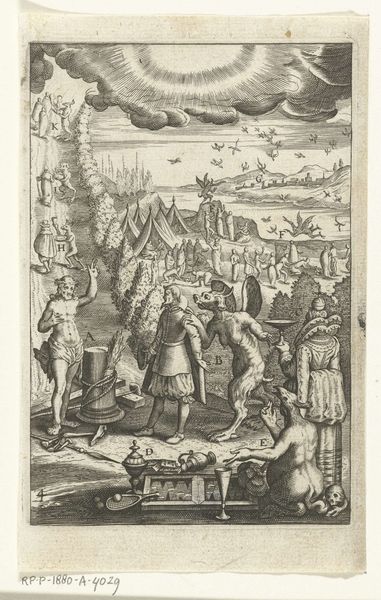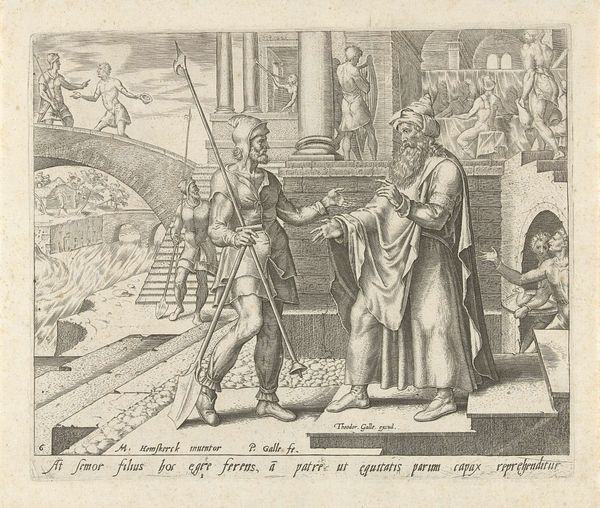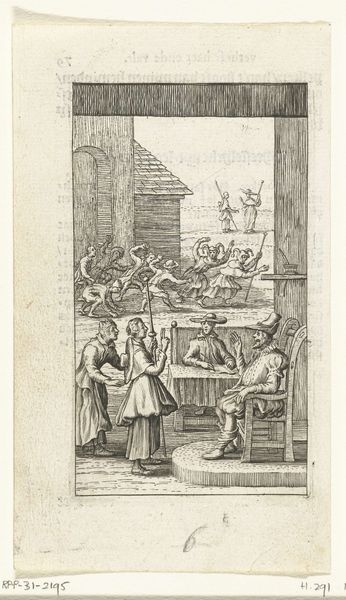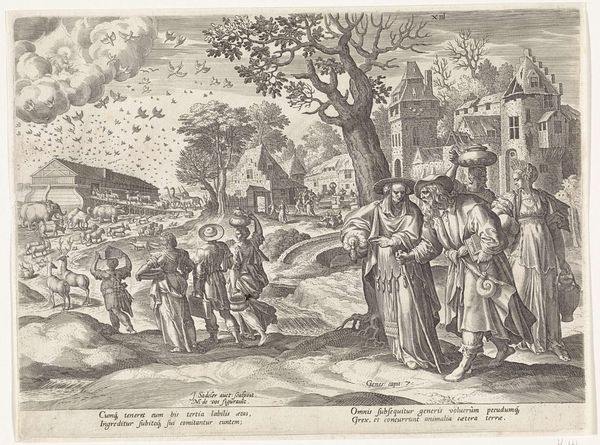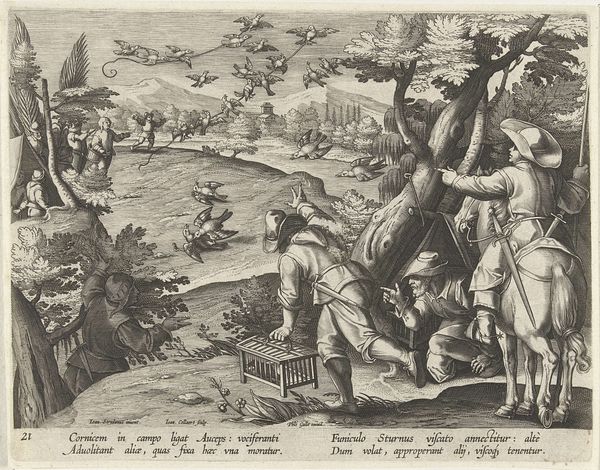
print, engraving
#
pen drawing
# print
#
pen illustration
#
pen sketch
#
old engraving style
#
landscape
#
figuration
#
genre-painting
#
history-painting
#
northern-renaissance
#
engraving
Dimensions: width 292 mm, height 216 mm
Copyright: Rijks Museum: Open Domain
This print, "Jacht op merels," or "Hunting Blackbirds," was made by Philips Galle in the late 16th century. It's an engraving, which means the image was incised into a metal plate, probably copper, with a tool called a burin. Ink was then applied to the plate, forced into the grooves, and then the surface was wiped clean. Finally, paper was laid on the plate and run through a press, transferring the ink and creating the print. The act of engraving requires a great deal of skill and precision. The lines you see are carefully planned, and they build up to create tone and texture, and the overall impression of a nighttime hunting scene. Consider how the material qualities of the metal plate—its hardness and its capacity to hold a line—influence the final image. In a way, the printmaking process mirrors the hunt itself: just as the hunters in the image are using their skills and tools to capture birds, Galle used his own tools and techniques to capture a moment in time and convey it to a wider audience. This piece reflects a society where skilled labor and artistic craftsmanship were valued, yet also one where such skills could be put in the service of leisure pursuits. Examining materials and making helps us to understand its historical and social context more deeply.
Comments
No comments
Be the first to comment and join the conversation on the ultimate creative platform.
